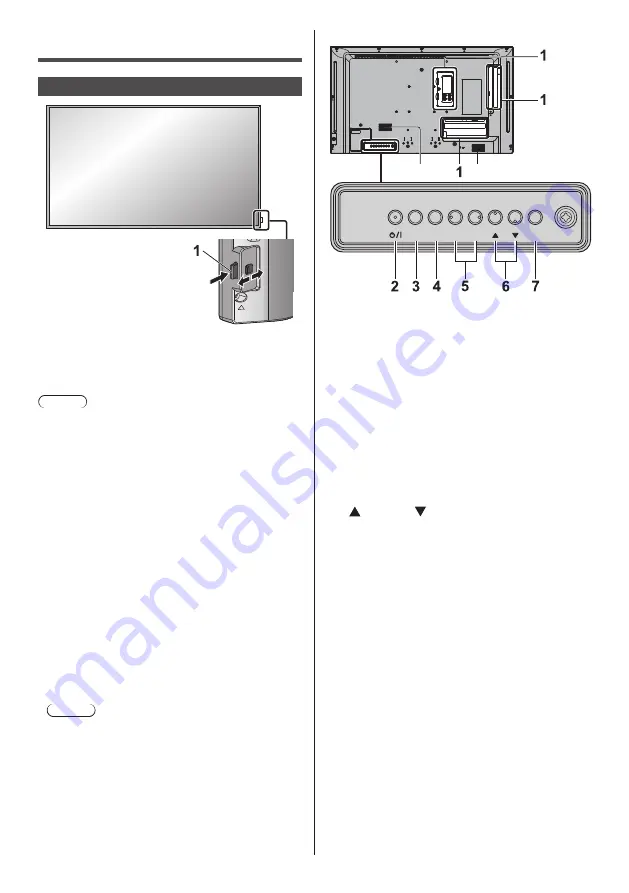
English
22
Identifying Controls
Main unit
●
To take out/store the power indicator and remote
control sensor, operate the lever on the rear panel.
It is also possible to press the remote control
sensor directly to store.
Note
●
For normal use, pull out the power indicator and
remote control sensor from the edge side of the
main unit by operating the lever on the rear panel.
Depending on the setup condition such as when
using the multi display, store them in the main unit.
1 Power Indicator / Remote control sensor
The Power Indicator will light.
When the power of the unit is ON (Main Power On
/ Off button: ON)
●
Picture is displayed: Green
●
Power OFF (standby) with remote control:
•
When [Network control] is set to [Off]: Red
•
When [Network control] is set to [On]: Orange
(Red/Green)
About [Network control] settings, see page 47.
●
Power OFF with “Power management” function:
Orange (Red/Green)
About “Power management” function, see page 43.
When the power of the unit is OFF (Main Power
On / Off button: OFF): No light
Note
●
Even if the display unit is turned off with the power
indicator off, some of the circuits are in power-on
status.
●
When the power indicator is orange, power
consumption during standby is generally larger than
that of when the power indicator is red.
MENU
ENTER
INPUT
+
-
8
8
1 External Input Terminal
Connects to video equipment, PC, etc. (see page 13)
2 <Main Power On / Off button>
Turns the power On / Off.
3 <INPUT (Unit)>
Selects the connected device. (see page 26)
4 <MENU (Unit)>
Displays the menu screen. (see page 30)
5 <+ (Unit)> / <- (Unit)>
Adjusts the volume. (see page 27)
On the main screen, switches settings or adjusts
settings level. (see page 30)
6 < (Unit)> / < (Unit)>
Selects the setting item on menu screen. (see page
30)
7 <ENTER (Unit)>
Configures the item on menu screen. (see page 30)
Switches aspect mode. (see page 28)
8 Built-in speakers
●
To output sound from the built-in speakers of the
unit, be sure to set [Output select] in the [Sound]
menu to [SPEAKERS]. (see page 34)
















































